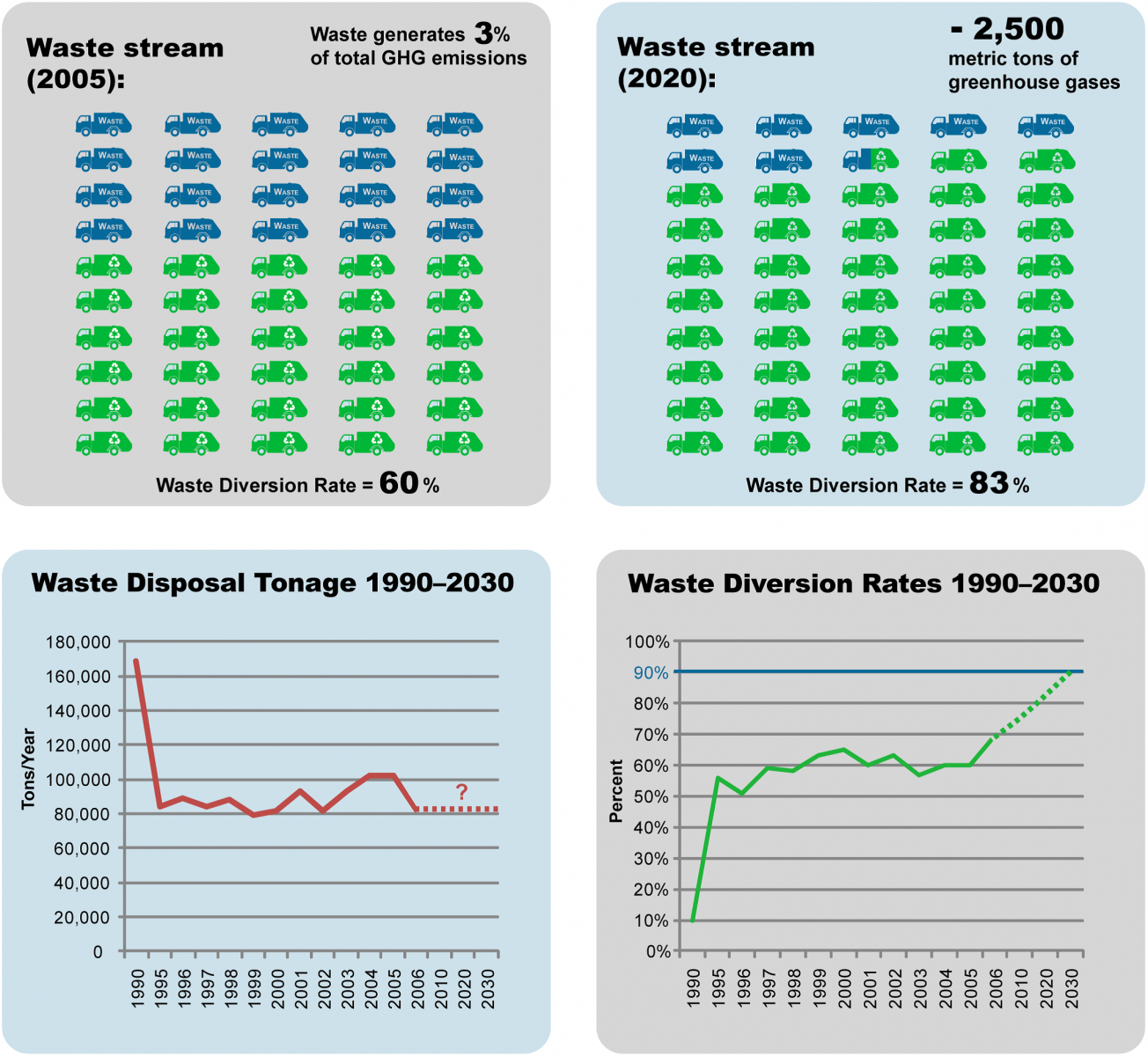
Jurisdiction: Alameda County, CA (Unincorporated Areas)
Plan Year: 2014
Background:
As a result of the Climate Protection Leadership Resolution and the Cool Counties Climate Stabilization Declaration, which Alameda County’s Board of Supervisors adopted in 2006 and 2007, respectively, the County was directed to inventory its greenhouse gas emissions and develop a plan to reduce emissions 80 percent by 2050. The county has two CAPs: the Unincorporated Community Climate Action Plan (CCAP), discussed here, and the Government Services and Operations Plan, which was adopted in 2010. The government plan aims to reduce the County’s GHG emissions 15 percent by 2020 and includes 80 recommended actions to achieve that goal.
The CCAP also aims to reduce GHG emissions 15 percent by 2020 through 37 local programs and measures related to waste, transportation, land use, building energy, water, and green infrastructure.
Materials Management Goals:
Alameda County recognizes that the goods consumed and disposed of by its residents “strongly influences the amount of waste-related GHG emissions released into the atmosphere.” The County has one of the highest waste diversion rates in the country, but it aims to increase that rate even higher by revising construction and demolition ordinances and establishing a food waste collection program.
- Increase solid waste reduction and diversion to 90 percent by 2030
- Strengthen the Construction and Demolition Debris Management Ordinance
- Develop a food waste collection program and an ordinance that requires all household and commercial food wastes and food soiled paper to be placed in organics carts
- Work with StopWaste.Org, Alameda County cities, and other organizations to urge adoption of legislation that requires extended producer responsibility and improves the recyclability of products and packaging
Strategies:
Each of the above listed sustainable materials management goals has accompanying strategies for achieving these targets. Each goal and its accompanying “implementation actions” is outline in the CCAP with a timetable, assignment of responsibility, performance indicator, cost and savings estimates, and potential sources of funding. See pages 61-66 of the plan for full details.
- Adopt an amendment to the Waste Diversion Resolution to achieve 90 percent waste reduction and diversion by 2030
- Expand outreach programs to maximize participation in waste reduction and diversion programs
- Amend an ordinance to require diversion of (1) 100% of inert waste and 50% wood/vegetative/scrap metal net of Alternative Daily Cover (ADC) and unsalvageable material put to other beneficial uses at landfills and recycling and (2) beneficial reuse of 100% of inert materials – concrete and asphalt by 2015
- Work with Stopwaste.Org to develop educational programs for construction professionals about advanced construction and demolition waste diversion techniques
- Partner with Stopwaste.Org and local businesses to establish a construction and demolition material recycling industry in the area
- Develop a residential and commercial food waste collection and composting outreach and education program
- Amend the County’s Waste Management Resolution to prohibit the disposal of household and commercial food scraps and food-soiled paper with other household waste
- Develop a resolution of support to encourage the State and federal governments to pass legislation that requires extended producer responsibility and improves recyclability of products and packaging
Progress Report:
None reported at this time.
Next Steps:
Alameda County planned for its staff to implement the CCAP and also measure its progress; evaluate and update the CAP over time; and obtain funding for CAP programs and projects. The County plans to conduct new community-wide GHG emissions inventories in 2014, 2018, and 2020. The County’s Planning Department is responsible for measuring progress toward its goal on the same schedule as the emissions inventories.
Links:
